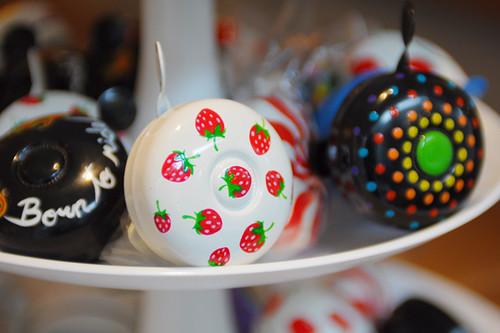
The bicycle bell is a useful, cheerful and inexpensive accessory. There are many styles available now: large and small, traditional and modern, subdued and colourful. But looks aside, bicycle bells can differ in their functionality - which is something we don't always consider when choosing one. Last week I received an email from a reader who found the big, beautiful bell she bought for her city bike difficult to use and wanted to know what other options were out there. I will take this as an opportunity to describe the different styles of bells I have used over time.
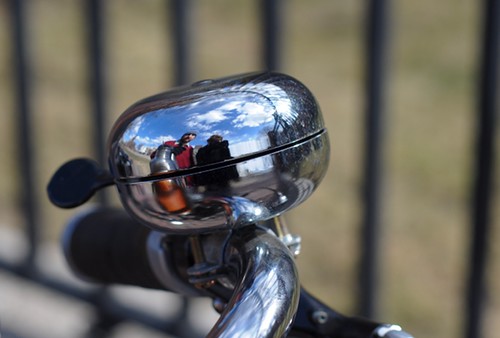
The prototypical classic city bike bell is the "ding dong" bell. It is huge. It is shiny chrome. And it makes a distinct, loud sound, hence the name. Ringing it involves moving the lever with your finger. The first bell I tried of this kind was on thePashley Princess, and like the reader I heard from last week, I must admit I found it difficult to use. The lever required a lot of pressure to depress. Sometimes I could not ring it fast enough, or would hurt my finger doing so. I adjusted the angle of the bell several times, but it didn't help; it was really the pressure required that gave me trouble. Additionally, the enormous chrome surface would blind me when riding the bike in direct sunlight. Overall I was not a fan of this bell, despite its iconic looks.
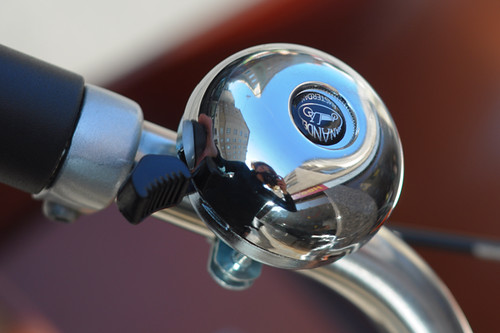
Of course similar bells exist that use the same mechanism but are easier to use, because the lever requires less pressure. It might just be be a matter of looking around and trying them if possible.
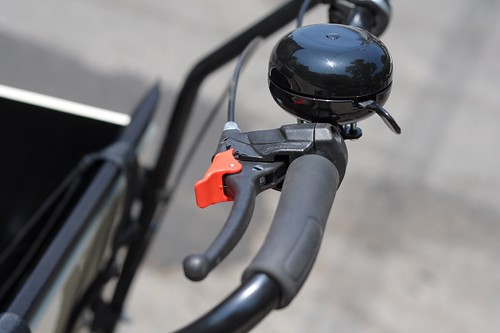
And if the highly reflective surface of chromed bells bothers you, consider a painted bell or one with a matte surface. You could even hand-paint it yourself.
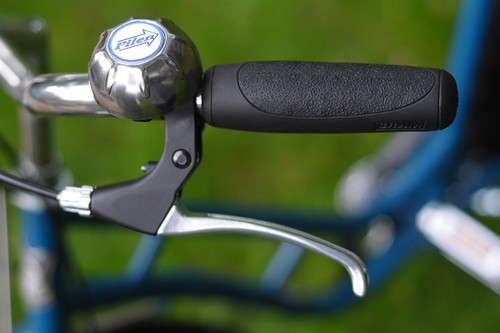
Not all traditional city bikes come with lever-operated bells. Pilen Cycles and a couple of other Swedish manufacturers offer a spinning bell that is extremely easy to use. Simply tapping the top portion lightly makes it spin and the bell produces a ringing sound, no pressure required. The ring is not as loud as that of the "ding-dong" bell, and sounds more like a continuous trilling, but I find it sufficient. Though in the US I have only seen these bells branded with specific manufacturer names (here is one from Kronan), it might be worthwhile asking an importer whether generic ones are available.
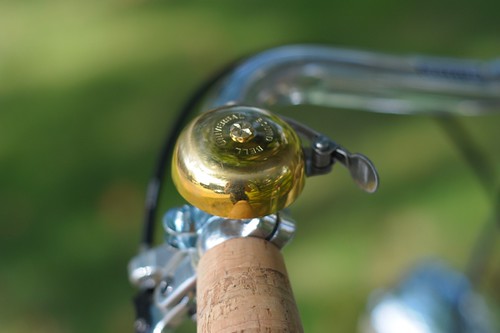
Another popular style is the striker bell. The Japanese brass bells that have become abundant in recent years are usually available with this mechanism. You pull back the lever, let go and it strikes the surface with a crisp, loud ring. On all the bells in this styleI've usedso far, the lever has been easy to pull back, not requiring a great deal of finger strength. Another thing I like about these brass bells, is that their surface is not as blindingly reflective as chrome. While they can be polished to a high shine, they can also be kept matte for those who prefer a less reflective surface. Overall, the striker brass bell is the one I now gravitate toward.

Striker bells are available in less traditional forms as well, such as this teapot bell that came bundled with the Paper Bicycle. Though I can't vouch for its durability,I found the plastic lever very easy to use. The sound was loud enough, and the small bell took up little space on the handlebars.
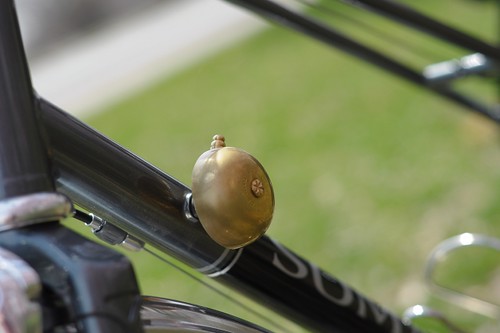
The classic brass bell also comes in a spring-operated version: Pinging the spring with your finger makes it ring. These bells tend to be smaller in size than the striker variant, and the sound they generate is on the quiet side, gentle and zen-like. Some find that the ring is not sufficiently loud for the city, so you may want to try it out.

Most of the bicycle bells I've seen - while varying in materials, size, and aesthetic - use one of the mechanisms described above. However, there are other styles I have not tried yet but would like to, such as the twist bell and the bar-end bell. I am sure others exist as well. Do you have a preference as far as bicycle bells? Feedback on the ones you've used would be most welcome.
No comments:
Post a Comment